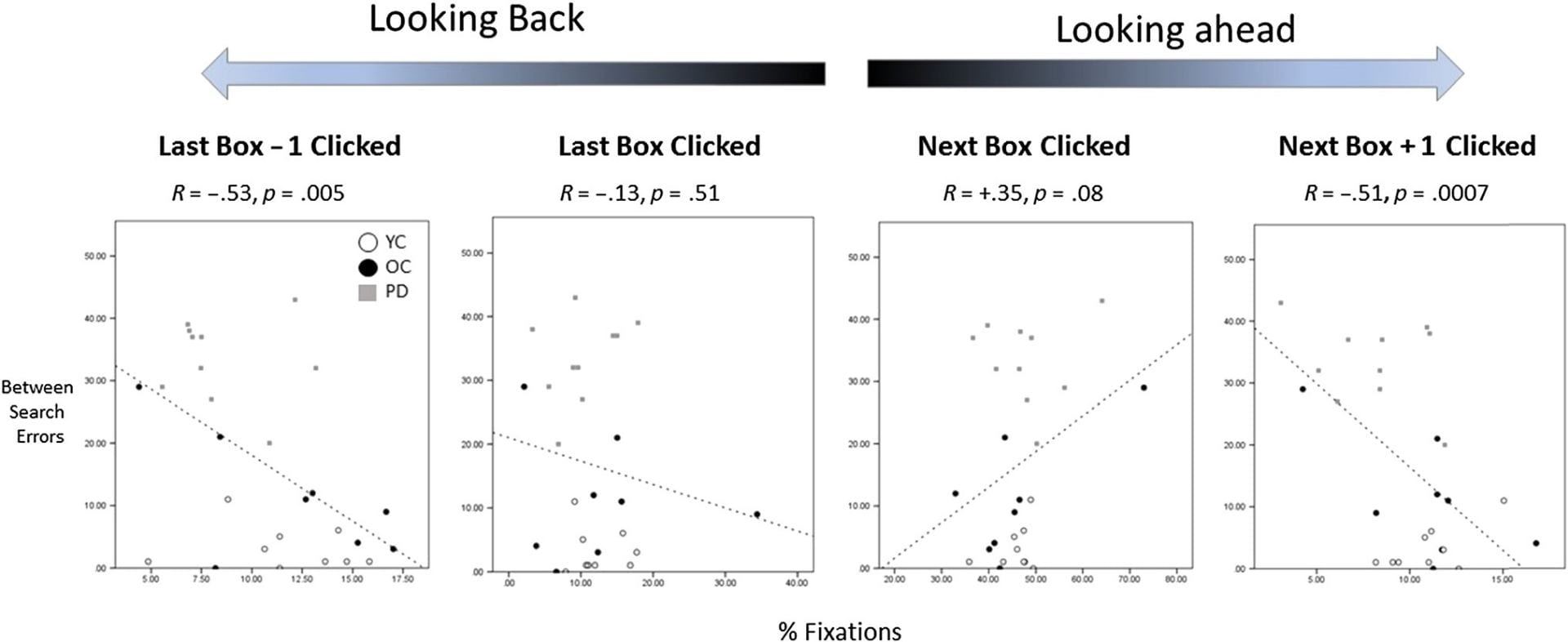Research in patients both young and old can be difficult, time consuming and stressful to carry out (e.g. due to the ethical approval process, patient recruitment and practical difficulties in testing patients with physical disabilities etc). Yet the importance and potential benefits to patients themselves of such research far out weighs the difficulty entailed in conducting it.
Two of my recently published papers reflect the outcome of patient based projects. Both studies use tasks which require viewers to search through items on a screen using saccadic eye movements. The first addressed the issue of working memory and oculomotor control in Parkinsons disease, a topic I have been researching since the late 1990s. Whilst the second reports the clinical trial evaluating the effectiveness of the Eyelander video game for children who have had neurological injury leading to partial visual field loss (hemianopia).
In the first study, published in the April 2019 edition of the Journal of Cognitive Neuroscience we recorded eye movements while participants performed a version of the CANTAB Spatial Working Memory task which requires patients to search through boxes on a computer screen to find hidden tokens.  I first had the idea to do this study whilst watching patients performing this task on a touch screen when I was a post-doctoral research fellow at Charing Cross Hospital, London. I could see that patients were using eye movements a lot in this token “foraging” task, but at the time we didnt have the technology to track their eye movements properly. It was only later that suitable eye tracking equipment and software became available to carry out the research. Amongst other findings the paper shows that people with Parkinsons don’t use eye movements to plan ahead or look back at locations they’ve already searched as effectively as controls, most likely due to an imbalance of the neurotransmitter dopamine in the prefrontal cerebral cortex.
I first had the idea to do this study whilst watching patients performing this task on a touch screen when I was a post-doctoral research fellow at Charing Cross Hospital, London. I could see that patients were using eye movements a lot in this token “foraging” task, but at the time we didnt have the technology to track their eye movements properly. It was only later that suitable eye tracking equipment and software became available to carry out the research. Amongst other findings the paper shows that people with Parkinsons don’t use eye movements to plan ahead or look back at locations they’ve already searched as effectively as controls, most likely due to an imbalance of the neurotransmitter dopamine in the prefrontal cerebral cortex.

The second paper, published in the December 2018 edition of Journal of Visual Impairment and Blindness describes the evaluation of our visual search game for children with partial visual loss following brain injury affecting the visual parts of the cerebral cortex. The results showed children were able to play the game at home unsupervised and that it had a positive effect on parallel measures of functional visual ability which was similar in magnitude to effects reported for visual search training in adult with partial visual loss following stroke. The Eyelander game is now available for anyone to play online, so please take a look. We are also starting a collaborative project with Great Ormond Street Hospital to evaluate its effectiveness for treating visual field loss following neurosurgical procedures in children.